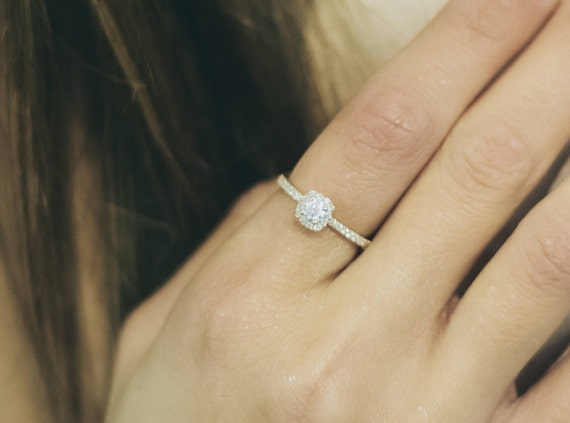
Engagement rings have long symbolized love and commitment, but the origins of Russian royal engagement rings offer a captivating glimpse into a rich history marked by cultural influences, artistic evolution, and surprising connections. These exquisite pieces, often adorned with intricate designs and precious stones, reflect not only personal sentiments but also the broader tapestry of Russian history and tradition. The journey of these engagement rings reveals unexpected origins that shaped their significance in royal culture.
The use of engagement rings in Russia can be traced back to ancient traditions, where the concept of betrothal was formalized through the exchange of simple bands. Initially, these rings were made from humble materials, such as iron or bronze, symbolizing strength and fidelity. Over time, as Russia’s social and political landscape evolved, so too did the materials and artistry associated with engagement rings, particularly among the nobility.
With the rise of the Russian aristocracy during the Middle Ages, engagement rings began to reflect the wealth and status of their wearers. The shift from simple bands to ornate designs marked a significant transition. These early royal engagement rings were often crafted from gold and embellished with gemstones, each selected for its symbolic meaning. For instance, diamonds represented eternity and strength, while sapphires conveyed loyalty and nobility. The engagement ring transformed into a powerful statement of social standing and familial pride.
An unexpected influence on Russian royal engagement rings came from the broader cultural exchanges taking place across Europe. The connections between Russian courts and other European royal families facilitated the introduction of new artistic styles and techniques. For example, the Baroque and Rococo periods brought elaborate ornamentation to jewelry design, infusing engagement rings with intricate details and lavish embellishments. This blending of styles created a distinct Russian aesthetic, characterized by a fusion of local traditions and international trends.
The 18th century marked a pivotal moment in the evolution of Russian engagement rings, particularly with the reign of Empress Catherine the Great. Her passion for the arts and culture inspired a flourishing of craftsmanship in Russia. Under her patronage, jewelers began to produce stunning pieces that showcased not only their technical skill but also the rich symbolism associated with love and commitment. Catherine’s influence transformed the engagement ring into an emblem of royal romance, often featuring elaborate designs that captured the imagination of the public.
Furthermore, the impact of the Russian Orthodox Church cannot be overlooked. The church’s teachings emphasized the sanctity of marriage, which influenced the design and meaning of engagement rings. Religious iconography often appeared in the adornments of these rings, reflecting the spiritual significance of the union. This merging of faith and artistry created engagement rings that were not only beautiful but also deeply meaningful.
In the 19th century, as the Romantic movement gained traction, the personal significance of engagement rings grew. The emphasis on individual sentiment led to a greater variety of designs, with couples seeking rings that reflected their unique stories. Some opted for rings that included birthstones or personalized engravings, adding layers of meaning to these royal symbols of love.
The tumultuous events of the early 20th century, particularly the Russian Revolution, dramatically altered the landscape of royal engagement rings. Many pieces were lost or repurposed as the monarchy fell. However, the legacy of these rings persisted, with modern Russian nobility often looking back to historical designs for inspiration. Today, the fascination with Russian royal engagement rings continues, as couples and collectors seek to celebrate the elegance and history encapsulated in these beautiful pieces.
In conclusion, the origins of Russian royal engagement rings reveal a complex narrative woven from cultural influences, artistic innovation, and historical context. From their humble beginnings to the opulent creations of the aristocracy, these rings embody the essence of love, loyalty, and tradition. The unexpected origins of these engagement rings highlight their enduring significance, reminding us that even in the most regal of contexts, the language of love remains universal and timeless. Through the lens of history, these royal symbols continue to inspire and captivate, celebrating the bonds that connect individuals across generations.
